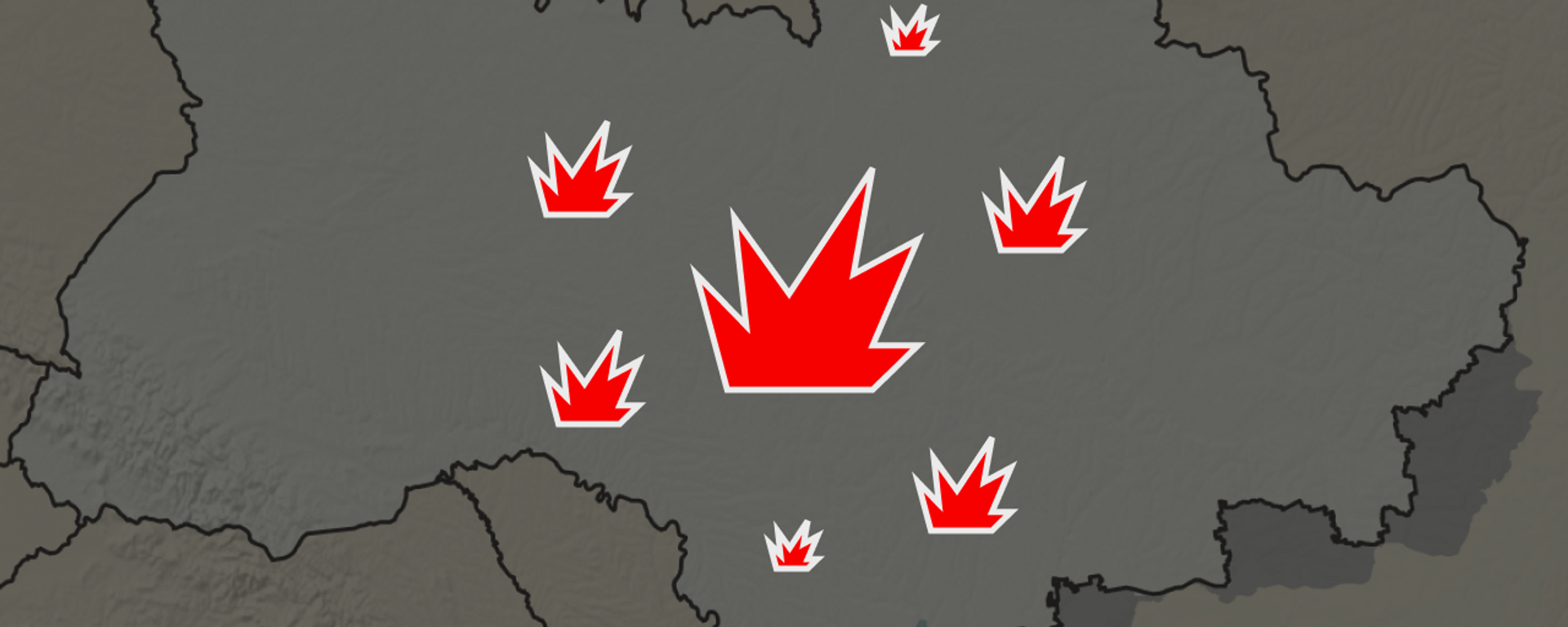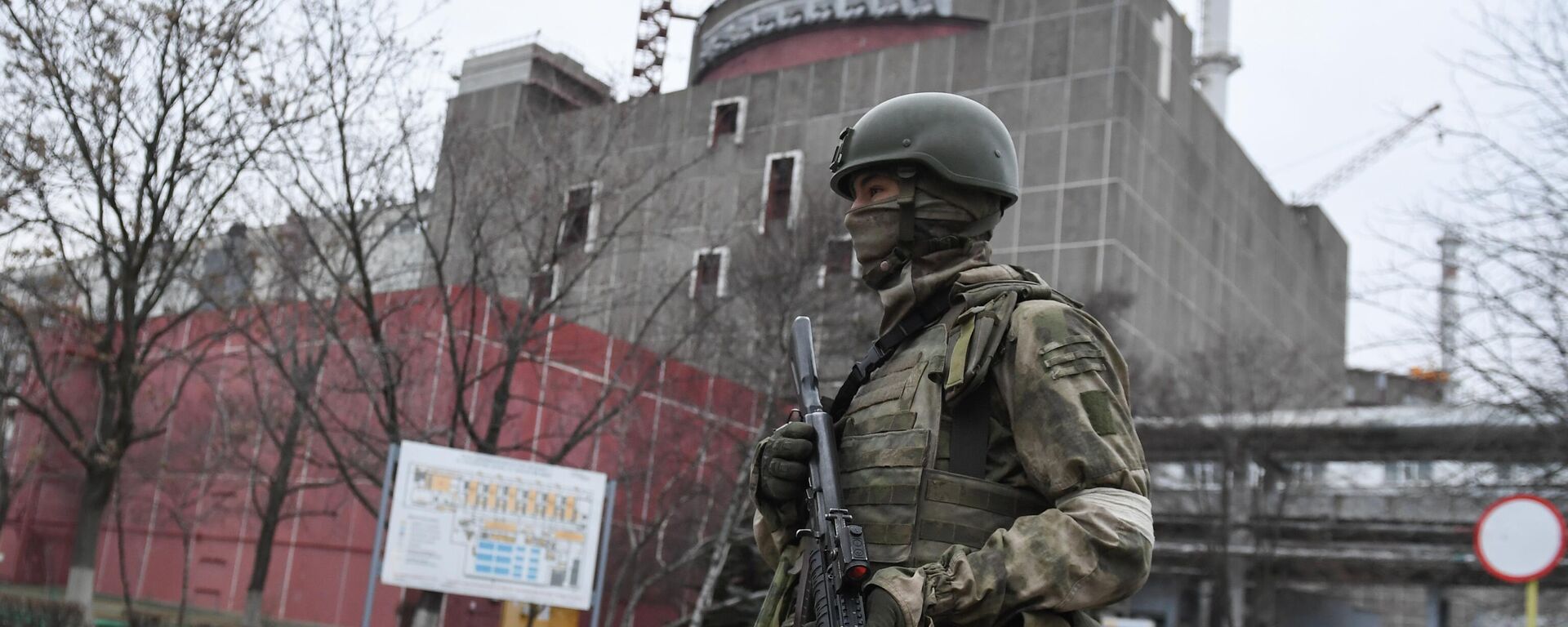https://sputnikglobe.com/20240501/ukraines-electricity-buying-binge-shows-what-happens-to-american-puppets-1118211520.html
Ukraine’s Electricity-Buying Binge Shows What Happens to American Puppets
Ukraine’s Electricity-Buying Binge Shows What Happens to American Puppets
Sputnik International
Inheriting one of the most technically sophisticated, powerful and symbiotic electricity generation systems in the world from the USSR in 1991, Ukraine’s pro-Western political class has gradually frittered away the country’s energy riches, and now faces the risk of losing what remains of its energy grid in the NATO-sponsored proxy war with Russia.
2024-05-01T12:23+0000
2024-05-01T12:23+0000
2024-05-01T12:53+0000
economy
ukrenergo
ukraine
russia
nato
energy
electricity
power plant
nuclear power plant
https://cdn1.img.sputnikglobe.com/img/07e8/05/01/1118211363_0:95:3303:1952_1920x0_80_0_0_65617dfe8815f7996be7cfe8d90c1e16.jpg
Ukraine has announced the ramping up of electricity imports from four of its neighbors, signaling the country’s increasingly unenviable status in the energy sector.National electricity transmission system operator Ukrenergo reported on Wednesday that Ukraine is importing 11,159 MWh-worth of juice from Romania, Moldova, Slovakia, and Hungary, with a maximum capacity of up to 1,500 MWh in some hours.Ukrenergo confirmed the continued deficit of electricity in the grid during peak evening hours, and advised residents to “use electricity sparingly.” The operator blamed the shortages on damage caused by Russian drone and missile strikes on trunk transmission equipment.Ukrenergo chief Volodymyr Kudrytsky warned in mid-April that consumers should prepare for periodic shortages of electricity. On April 12, Ukrainian Energy Minister Herman Halushchenko asked residents to brace for blackouts in the spring and summer period, and to purchase generators. In March, Kudrytsky said Ukraine had suffered its largest attack “of all time,” with “serious” damage done to thermal and hydroelectric plants, after Russia launched retaliatory strikes for Ukrainian drone attacks on energy facilities deep in the Russian hinterland.Ukraine moved to synchronize its electricity grid with the European Union’s Continental European Network in March 2022, exporting a record $590 million worth of electricity to Europe that year. However, something seemed to go awry in the months and years that followed, with Ukrainian consultancy ExPro Consulting reporting in January that Ukraine had shifted from record exports to record imports – buying 232,950 MWh of electricity from abroad in December 2023 alone – 75 times above what it did in December 2022.Ukraine’s electricity production dropped by 27.5 percent in 2022 compared to 2021 (including a 28 percent decline in electricity generated by nuclear power plants, 35 percent in thermal power, 32 percent in combined heat and power plants, and 36 percent in renewables). The majority of thermal power plants are situated in Donbass, which formally joined Russia in October of 2022. The Zaporozhye Nuclear Power Plant is the most powerful in Europe. Losing control of the facility to Russia in the spring of 2022, Ukraine’s military has resorted to bombing it incessantly, threatening to create a Chernobyl-style disaster.The vast majority of Ukraine’s main power-generating facilities, including all of its major nuclear, coal, hydroelectric, and natural-gas-consuming power plants (which make up nearly 90 percent of total electricity output) were created during the Soviet period, with part of the infrastructure based on economic linkages with Russia. Even before the escalation of the conflict in 2022, many of these facilities had fallen into disrepair, requiring hundreds of millions of dollars in investment to be restored to working order.
https://sputnikglobe.com/20240322/russian-strikes-paralyze-ukraines-power-grid-heres-what-was-hit-1117484767.html
https://sputnikglobe.com/20240411/ukraine-and-the-zaporozhye-nuclear-power-plant-the-samson-solution-1117876075.html
ukraine
russia
Sputnik International
feedback@sputniknews.com
+74956456601
MIA „Rossiya Segodnya“
2024
News
en_EN
Sputnik International
feedback@sputniknews.com
+74956456601
MIA „Rossiya Segodnya“
Sputnik International
feedback@sputniknews.com
+74956456601
MIA „Rossiya Segodnya“
does ukraine have enough electricity, does ukraine have a lot of electricity, does west subsidize ukraine's electricity needs
does ukraine have enough electricity, does ukraine have a lot of electricity, does west subsidize ukraine's electricity needs
Ukraine’s Electricity-Buying Binge Shows What Happens to American Puppets
12:23 GMT 01.05.2024 (Updated: 12:53 GMT 01.05.2024) Inheriting one of the most technically sophisticated, powerful, and symbiotic electricity generation systems in the world from the USSR in 1991, Ukraine’s pro-Western political class has gradually frittered away the country’s energy riches, and now faces the risk of losing what remains of its energy grid in the NATO-sponsored proxy war with Russia.
Ukraine has announced the ramping up of electricity imports from four of its neighbors, signaling the country’s increasingly unenviable status in the energy sector.
National electricity transmission system operator Ukrenergo
reported on Wednesday that Ukraine is importing 11,159 MWh-worth of juice from Romania, Moldova, Slovakia, and Hungary, with a maximum capacity of up to 1,500 MWh in some hours.
Ukrenergo confirmed the continued deficit of electricity in the grid during peak evening hours, and advised residents to “use electricity sparingly.” The operator blamed the shortages on damage caused by Russian drone and missile strikes on trunk transmission equipment.
“During the day, consumption restrictions apply in the Kharkov region. In the morning, about 203,000 household consumers were cut off. Consumption for industry in Krivoy Rog is also limited round the clock,” Ukrenergo said, adding that there have been blackouts in the Odessa, Kharkov, and Kherson regions.
Ukrenergo chief Volodymyr Kudrytsky warned in mid-April that consumers should prepare for periodic shortages of electricity. On April 12, Ukrainian Energy Minister Herman Halushchenko asked residents to brace for blackouts in the spring and summer period, and to purchase generators. In March, Kudrytsky said Ukraine had suffered its largest attack “of all time,” with “serious” damage done to thermal and hydroelectric plants, after Russia launched retaliatory strikes for Ukrainian drone attacks on energy facilities deep in the Russian hinterland.
Ukraine’s electricity production and consumption have been dropping steadily for over three decades, from 298.62 TWh produced in 1990, to 171.27 TWh in the year 2000, 188.82 TWh in 2010, 148.5 TWh in 2020, and 114.29 TWh in 2022.
Ukraine moved to synchronize its electricity grid with the European Union’s Continental European Network in March 2022, exporting a record
$590 million worth of electricity to Europe that year. However, something seemed to go awry in the months and years that followed, with Ukrainian consultancy ExPro Consulting
reporting in January that Ukraine had shifted from record exports to record imports – buying 232,950 MWh of electricity from abroad in December 2023 alone –
75 times above what it did in December 2022.
Ukraine’s electricity production dropped by 27.5 percent in 2022 compared to 2021 (including a 28 percent decline in electricity generated by nuclear power plants, 35 percent in thermal power, 32 percent in combined heat and power plants, and 36 percent in renewables). The majority of thermal power plants are situated in Donbass, which formally joined Russia in October of 2022. The Zaporozhye Nuclear Power Plant is the most powerful in Europe. Losing control of the facility to Russia in the spring of 2022, Ukraine’s military has resorted to bombing it incessantly, threatening to create a Chernobyl-style disaster.
The vast majority of Ukraine’s main power-generating facilities, including all of its major nuclear, coal, hydroelectric, and natural-gas-consuming power plants (which make up nearly 90 percent of total electricity output) were created during the Soviet period, with part of the infrastructure based on economic linkages with Russia.
Even before the escalation of the conflict in 2022, many of these facilities had fallen into disrepair, requiring hundreds of millions of dollars in investment to be restored to working order.




